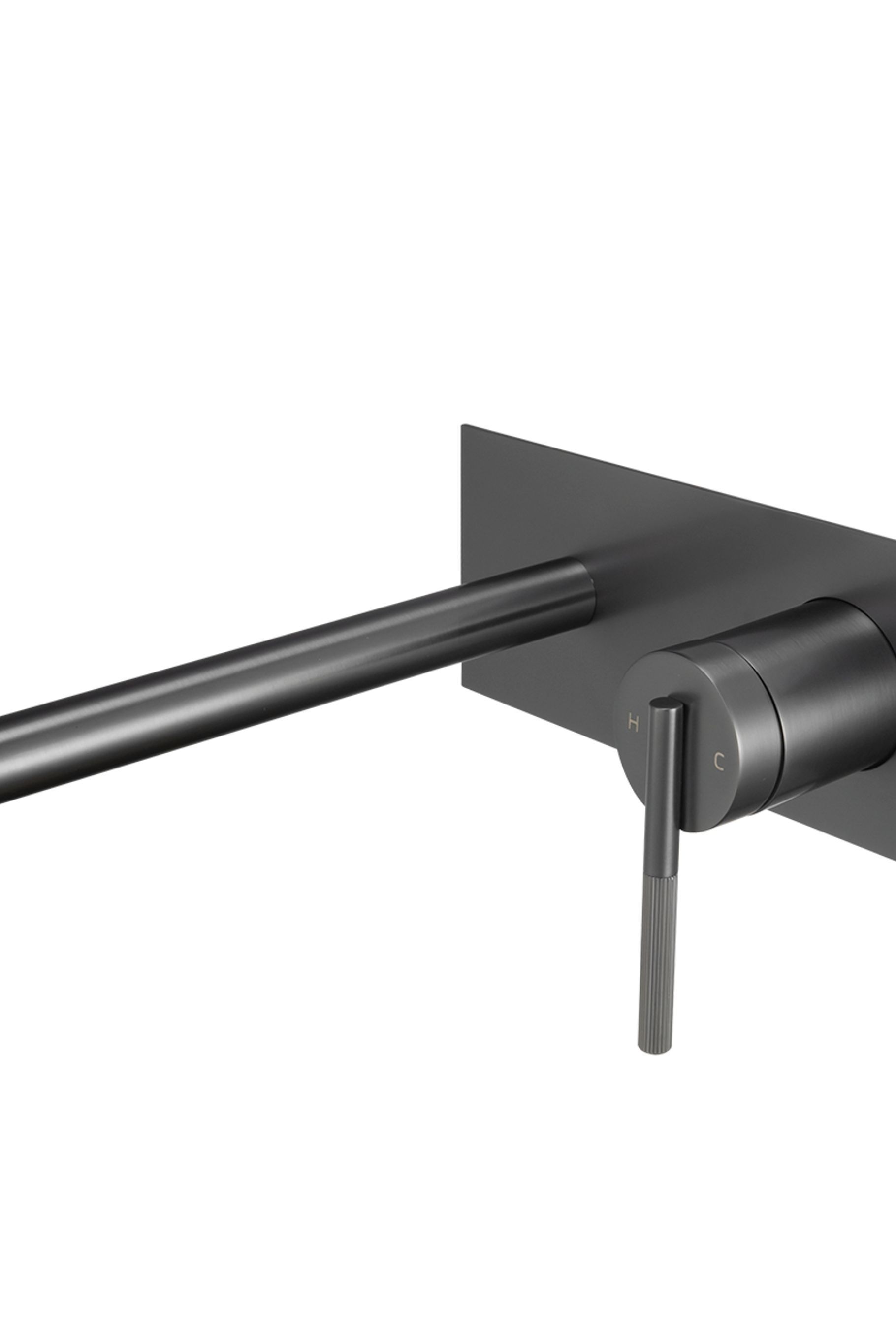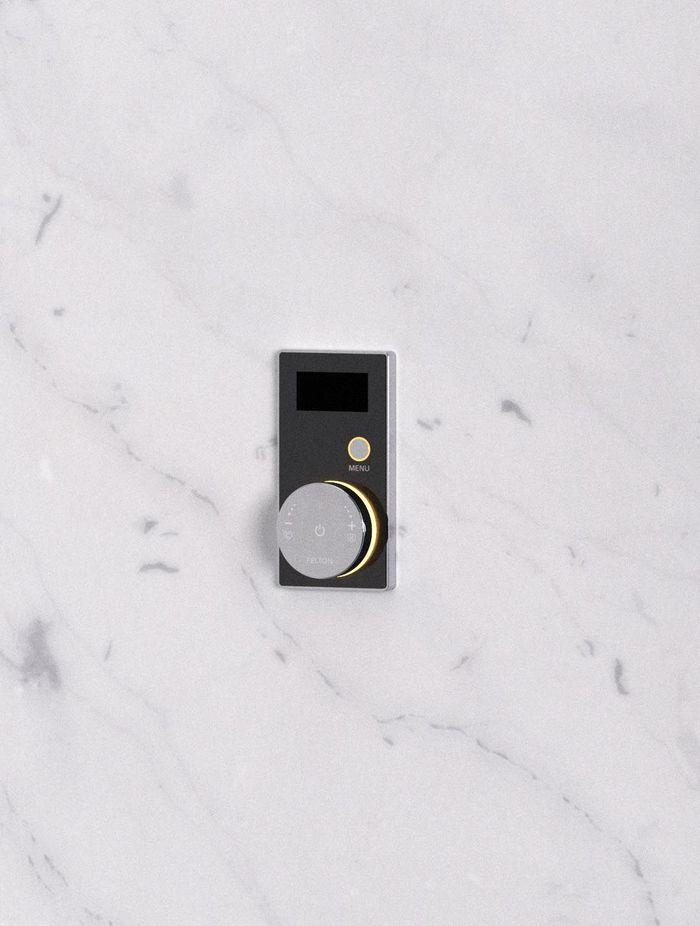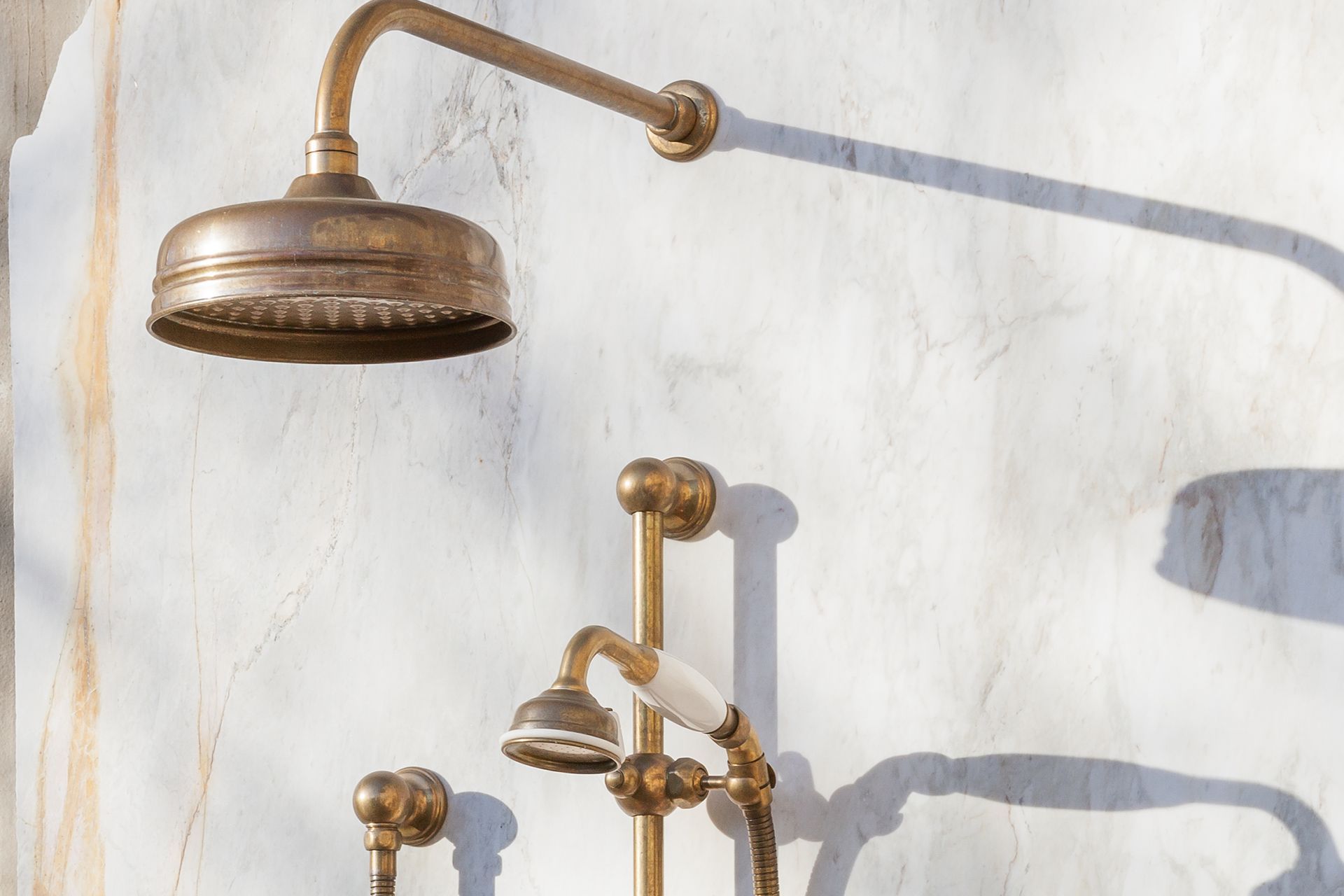5 types of shower mixers to consider for your bathroom

Looking for a new shower mixer but not sure which type to go for? In this guide we look at the different types available, the pros and cons of each and who each type is suited to.
Types of shower mixers
1. Manual shower mixers
Manual shower mixers require the user to adjust hot and cold water manually to achieve the desired temperature. This traditional type of mixer is valued for its straightforward mechanism and ease of installation, making it a common feature in many bathrooms.
Pros
Simplicity and ease of use
Manual shower mixers are very straightforward to use. All users have to do is manually adjust the hot and cold water valves until they reach the desired temperature. This simplicity extends to their design, making them intuitively easy for almost anyone to use.
Cost-effectiveness
One of the most significant advantages of manual shower mixers is their affordability. Compared to more advanced types of shower mixers, such as digital or thermostatic mixers, manual versions are generally less expensive both in terms of upfront costs and installation fees.
Wide variety of designs
Manual mixers come in a broad range of styles and finishes, making it easy to find an option that fits any bathroom décor. Whether you're looking for something contemporary or a fitting more aligned with traditional designs, manufacturers offer manual mixers that can meet diverse preferences.
Cons
Lack of precise temperature control
The primary drawback of manual shower mixers is their inability to automatically regulate water temperature. Users must manually adjust the mix of hot and cold water, which can be tricky to get just right and may require frequent adjustments throughout the shower.
Risk of temperature fluctuations
Manual shower mixers are susceptible to sudden changes in water temperature if there are fluctuations in the home's water pressure. For instance, if someone else in the house flushes a toilet or starts a dishwasher, you might experience a sudden burst of hot or cold water.
Who are manual shower mixers suited to?
Manual shower mixers are great for homeowners on a relatively tight budget. They're often the most affordable type of shower and are simple to install and use without the need for extensive bathroom modifications or investments.
Related article: 9 common types of shower heads - pros, cons and pricing
2. Thermostatic shower mixers
Thermostatic shower mixers are designed for safety and convenience, maintaining water at a consistent temperature set by the user, regardless of changes in water pressure. This prevents sudden temperature fluctuations that can lead to scalding.
Pros
Enhanced safety features
Thermostatic shower mixers stand out for their ability to prevent sudden temperature spikes, significantly reducing the risk of scalding injuries. This makes them particularly suitable for households with young children or elderly individuals, ensuring a safer bathing environment for everyone.
Stable temperature control
Unlike manual mixers, thermostatic models maintain the water at a steady temperature as set by the user, regardless of external changes in water pressure.
Water and energy efficiency
By eliminating the need to adjust water temperature manually, thermostatic mixers contribute to reduced water and energy consumption. Users spend less time getting the temperature right, which means less water and energy are wasted, contributing to eco-friendly living and potential savings on utility bills.
Cons
Higher initial cost
The advanced technology and additional safety features of thermostatic mixers come at a higher price point compared to their manual counterparts. This initial investment may be a significant consideration for budget-conscious shoppers.
Complex installation process
Installing a thermostatic shower mixer generally requires professional assistance due to the complexity of its mechanism. This not only adds to the cost but also means that DIY enthusiasts may find it challenging to handle the installation themselves.
Potential for mechanical failure
Thermostatic valves rely on precise mechanical parts to regulate water temperature. Over time, these components can wear out or malfunction, potentially requiring costly repairs or replacements. This reliance on more complex machinery can be seen as a drawback compared to the simpler construction of manual mixers.
Who are thermostatic shower mixers suited to?
Thermostatic shower mixers are particularly well-suited for families with young children or elderly members, prioritising safety with features designed to prevent scalding by maintaining a stable shower temperature. They also appeal to eco-conscious homeowners who value their water and energy-saving benefits, aligning with efforts to reduce environmental impact and utility costs.
Related article: How much does it cost to replace a shower in Australia?
3. Digital shower mixers
Digital shower mixers represent the cutting edge of shower technology, allowing precise control over water temperature and flow with digital interfaces. Users can set their preferences for a personalised shower experience, and some models offer remote control via smartphones.
Pros
Precision control
Digital mixers offer precise control over water temperature and flow, allowing users to easily adjust their shower settings for the perfect experience.
Personalisation
Many digital mixers can store settings for different users, making it easy to switch between preferred shower temperatures and flows with the touch of a button.
Remote operation
Some models can be controlled via a smartphone app, allowing users to start the shower and reach their desired temperature before even entering the bathroom.
Cons
High cost
Digital shower mixers are typically the most expensive type, reflecting their advanced technology and additional features.
Electricity requirement
Unlike manual, thermostatic, and pressure-balanced mixers, digital mixers require electricity to operate, which could be a limitation in some bathroom setups.
Complex installation and maintenance
The installation process can be complex, often requiring professional assistance. Additionally, should something go wrong, diagnosing and repairing digital mixers can be more complicated and expensive than with simpler mechanical systems.
Who are digital shower mixers suited to?
Digital shower mixers are popular with tech enthusiasts who relish integrating cutting-edge gadgets into their homes. They also appeal to individuals seeking to make their showering experience more convenient and save on time.
Related article: Top tips for designing a smart home in 2024
4. Concealed shower mixers
Concealed shower mixers offer a minimalist and clean appearance by hiding the plumbing and valve body within the wall, leaving only the control levers and showerhead visible. Concealed mixers can be paired with a variety of shower heads, allowing for a customised shower setup.
Pros
Clean appearance
Concealed mixers offer a clean, minimalist look by hiding plumbing fixtures behind the wall, which can enhance the overall appearance of the bathroom.
Save on space
By concealing the plumbing, these mixers can make small bathrooms appear larger and less cluttered.
Cons
Complex installation
Installing a concealed mixer involves significant work, including opening the wall to accommodate the concealed parts, which can increase installation costs and complexity.
Accessibility for repairs
Should repairs or maintenance be needed, accessing the concealed parts of the mixer can be challenging and may require opening up the wall again.
Cost
Generally, concealed mixers are more expensive than exposed ones due to the complexity of the design and installation process.
Who are concealed shower mixers suited to?
Concealed shower mixers are great for homeowners looking to maximise space and give their shower area a streamlined appearance as they hide the plumbing features within the wall. The properties also mean they’re well suited to small bathrooms.
5. Bar shower mixers
Bar shower mixers feature a sleek design with controls located at either end of a horizontal bar. They are straightforward to install and use, often incorporating safety features like thermostatic controls to prevent scalding. The minimalist design of bar mixers suits contemporary bathroom styles, providing a modern look without sacrificing performance.
Pros
Ease of installation and use
Bar shower mixers are known for their straightforward installation process and ease of use, making them a practical choice for many homeowners.
Safety features
Many bar mixers come with built-in thermostatic controls, offering a safe shower experience by preventing sudden temperature changes.
Modern design
The sleek, minimalist design of bar shower mixers suits contemporary bathroom set ups well, adding a touch of modernity.
Cons
Limited placement options
The design of bar mixers might not be suitable for all shower setups, especially in smaller or more traditionally styled bathrooms.
Exposed plumbing
Unlike concealed mixers, the plumbing for bar mixers is external, which might not appeal to those seeking a completely streamlined look.
Temperature fluctuation
For models without thermostatic control, users may experience temperature fluctuations similar to manual mixers, especially if water pressure varies widely in the home.
Who are bar shower mixers suited to?
Bar shower mixers are ideal for individuals keen on updating their shower setups without complex plumbing work, and for households with safety in mind. These mixers fit well into homes where the emphasis is on making smart, straightforward enhancements that improve daily living.
How to choose the right shower mixer
Alongside the different types of shower mixers to consider, there are additional factors to think about, including:
Water pressure compatibility
The shower mixer you choose must be suitable for the water pressure system in your home. Some mixers are designed specifically for either high or low-pressure systems. Ensure the mixer can perform well under your home's water pressure conditions to avoid issues with water flow.
Design and aesthetics
The design of the shower mixer should complement your bathroom's overall style and décor. Most mixers come in various finishes such as chrome, stainless steel, brushed nickel, and matte black.
Size and space
Consider the size of the shower mixer in relation to the available space in your shower area. Make sure the mixer and its controls can be easily accessed and operated within the space constraints of your shower.
Features and functionality
Some mixers come with a diverter, allowing you to switch water flow between different outlets (e.g., overhead shower to handheld showerhead). If you’re looking to save water look for mixers with water-saving features.
Budget
Shower mixers can vary greatly in price. Determine your budget beforehand but consider investing in a quality mixer that will last longer and perform better. Sometimes, spending a bit more initially can save money in the long run on maintenance and replacements.
Final thoughts
As you can see, there are a few different shower mixers available, and this guide should have provided you with insights into the various options, what to consider during the purchasing decision, and the type that is right for you.





